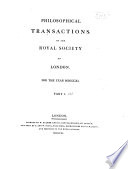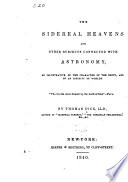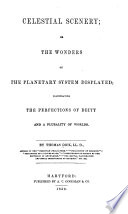 ... than the rest; the stars of the Milky Way are scattered over it in the same manner as over the ,rest of the heavens. Its extent in the parallel is nearly one degree and half, and in the meridional direction about fifty-two minutes. ... than the rest; the stars of the Milky Way are scattered over it in the same manner as over the ,rest of the heavens. Its extent in the parallel is nearly one degree and half, and in the meridional direction about fifty-two minutes.  Astronomy simplified - Page 123by Frances Barbara Burton - 1838 - 120 pagesFull view Astronomy simplified - Page 123by Frances Barbara Burton - 1838 - 120 pagesFull view - About this book
 | Royal Society (Great Britain) - 1811 - 462 pages
...kind, and " it is brighter in three or four places than in the rest ; the " stars of the milky way are scattered over it in the same " manner as over the rest of the heavens. Its extent in the " parallel is nearly \\ degree, and in the meridional direction <* about 52 minutes. The following part of it... | |
 | Edward T W. Polehampton - 1815 - 568 pages
...kind, and it is " brighter in three or four places than in the rest ; the stars of the " milky way are scattered over it in the same manner as over the " rest of the heavens. Its extent in the parallel is nearly \i de" gree, and in the meridional direction about 52 minutes. The " following part of it... | |
 | Thomas Squire - 1836 - 332 pages
...milky kind, and it is brighter in three or four places than in the rest; the stars of the milky-way are scattered over it in the same manner as over the rest of the heavens. Its extent in the parallel is nearly one degree and a half, and in the meridional direction about fifty-two minutes." That extensive... | |
 | Frances Barbara Burton - 1837 - 202 pages
...telescopic appearance of one of these nebulae. " Extreme faint branching nebulosity ; its white" ness, entirely of the milky kind, and brighter in " three...same " manner as over the rest of the heavens ; its ex" tent in the parallel, nearly one degree and a half, " and in the meridian direction, 52 minutes."... | |
 | 1840 - 460 pages
...milky kind, and it is brighter in three or four places than the rest ; the stars of the Milky Way are scattered over it in the same manner as over the rest of the heavens. Its extent in the parallel is nearly one degree and half, and in *he meridional direction about fifty-two minutes." It appears... | |
 | Thomas Dick - 1850 - 586 pages
...three or four placos than the rest; the stare of the Milky Way are scattered over it in the вате manner as over the rest of the heavens. Its extent in the parallel is nearly one degree and a half, and in tire meridiana! direction about fifty-two minutes." It appears... | |
 | Thomas Dick - 1857 - 878 pages
...milky kind, ar.d it is brighter in three or four places than the rest; the stars of. the Milky Way are scattered over it in the same manner as over the rest of the heavens. Its extent in the parallel is nearly one degree and a half, and in the mendianal direction about fifty-two minutes." It appears... | |
 | Michael J. Crowe - 1994 - 468 pages
...meridian, and contains three or four places that are brighter than the rest. The stars of the Galaxy are scattered over it in the same manner as over the rest of the heavens. It follows e Cygni 11.5 minutes in time, and is 2° 19' more south. The third is a branching Nebulosity... | |
 | 566 pages
...meridian, and contains three or four places that are brighter than the rest. The stars of the Galaxy are scattered over it in the same manner as over the rest of the heavens. It follows • Cygni 11.5 minutes of time, and is 2° 19' more south. The third* is a branching nebulosity... | |
| |